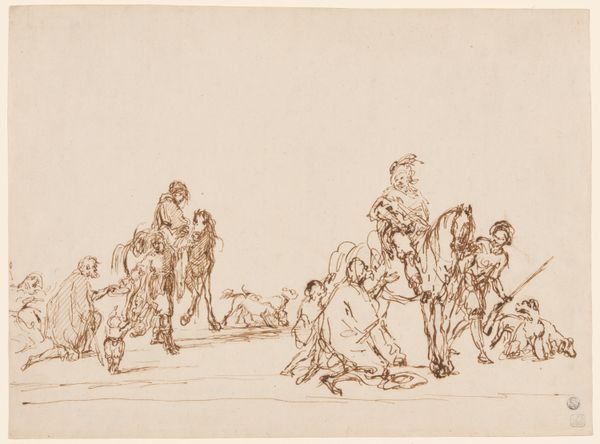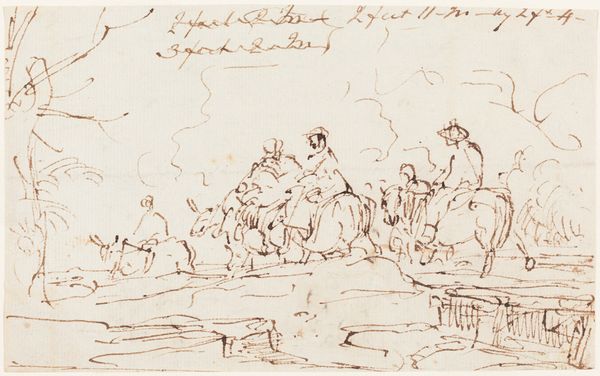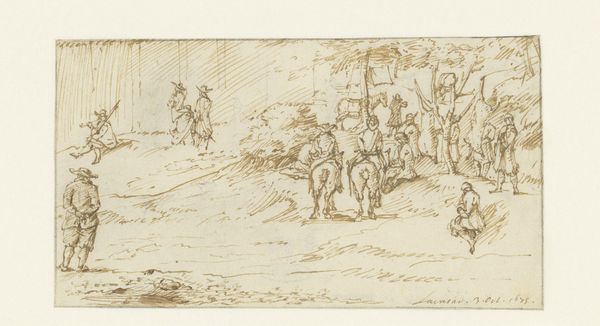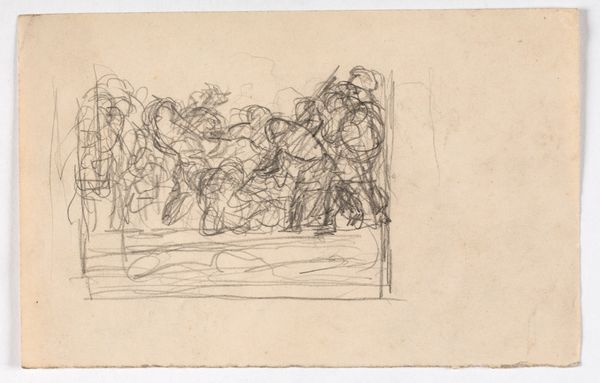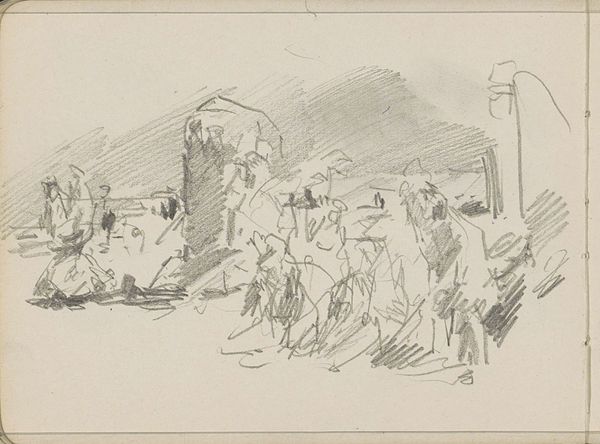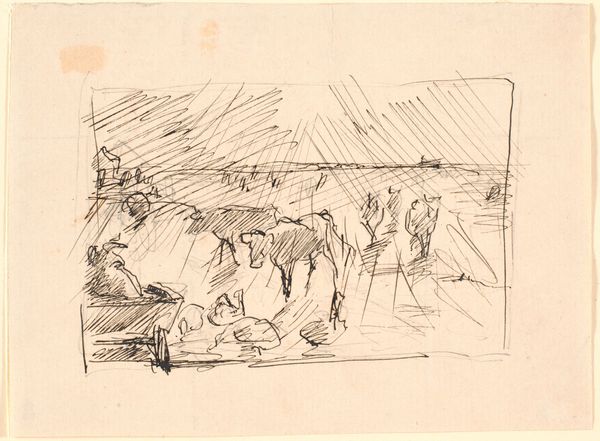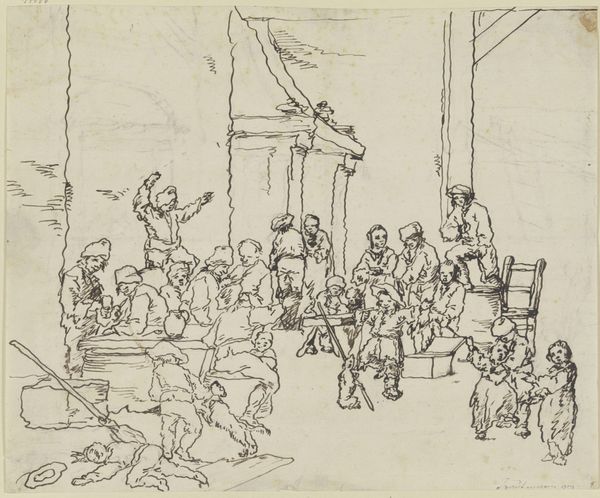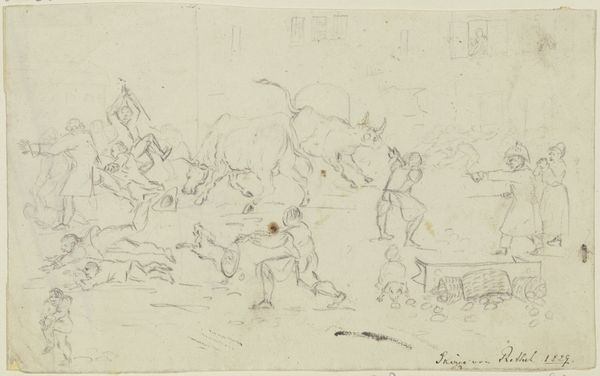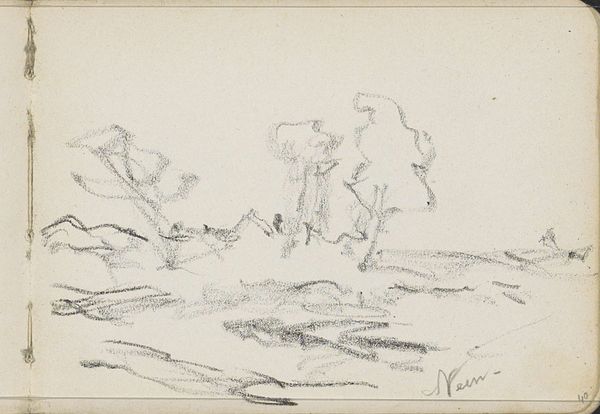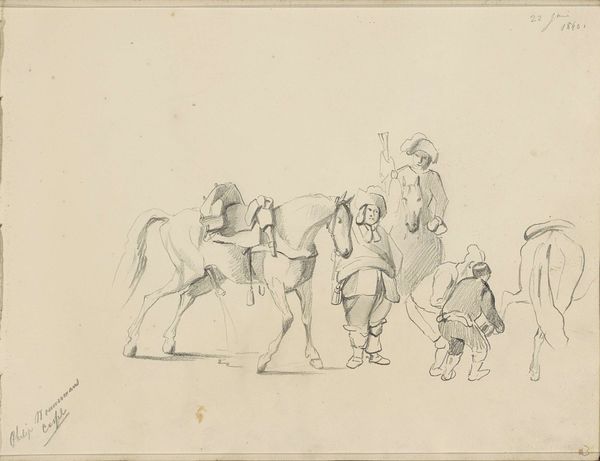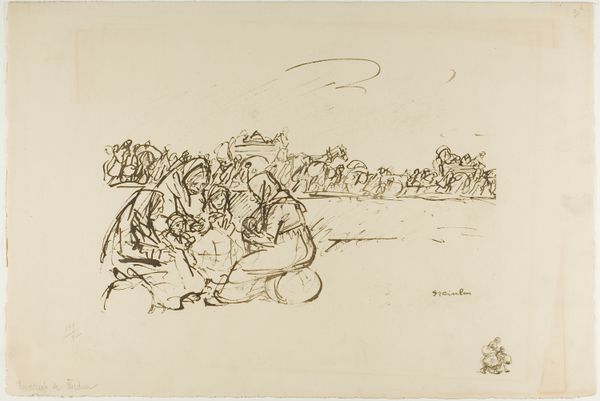
drawing, ink, pen
#
drawing
#
pen sketch
#
figuration
#
ink
#
romanticism
#
pen
#
history-painting
Dimensions: overall: 9 x 13.5 cm (3 9/16 x 5 5/16 in.)
Copyright: National Gallery of Art: CC0 1.0
Curator: It’s fitting that we come to “Battle Scene”, a pen and ink drawing created in 1840 by Sir David Wilkie. What do you make of it? Editor: Chaos, but the organized kind, like looking at musical notes strewn across a page before they become a symphony. Is "scribble" too harsh a word? Curator: Not necessarily, though Wilkie was actually a master of detail when he chose to be. The loose linework speaks more to Romanticism than realism, privileging immediacy and movement. What catches my eye is the massing of figures. Are they armies clashing or a crowd reacting to something momentous? Editor: Maybe it's a bit of both. Battlefields have their audiences, right? The lines that suggest faces… they’re like masks reflecting primal emotions. Anger? Fear? It’s potent stuff, even in this raw state. What historical battles might he be alluding to? Curator: Wilkie travelled extensively through Europe and the Middle East. Considering its time, 1840, it could relate to various conflicts or a general statement on martial themes, evoking battles past but hinting at present anxieties. Remember, these events also carry potent symbolism – victory, sacrifice, and societal shifts. Editor: It’s interesting that he made it a drawing. He had his media options, but pen and ink says, "I had to get this down fast, or I’d lose it." It almost feels journalistic in that respect, a snapshot from the front lines. There’s also a raw immediacy to the materials themselves – the permanence of ink… it echoes the indelible mark that such events leave on us. Curator: Precisely. And that rawness highlights something else – how memories of conflict get abstracted, softened, transformed into symbols we can process, learn from, or perhaps… mythologize. The lack of a clear focal point actually enhances that. It speaks to the overwhelming, all-encompassing nature of conflict itself. Editor: Agreed. So, it becomes more than a "battle scene," morphing into something closer to a psychological landscape, an externalisation of our collective anxieties about conflict and maybe even of our fascination with it? Curator: It suggests to me that Sir David was thinking deeply about history painting, and perhaps he realised its conventions are ill-equipped to contain or reflect trauma on a grand scale. Editor: I can see that, and on that somber note, it makes sense to consider Wilkie’s piece not as a specific event, but as an emotional echo that continues to resonate in us, right up to the present. Curator: Nicely observed. The act of creation also becomes a powerful attempt at ordering the disorder of such conflicts through symbols and images.
Comments
No comments
Be the first to comment and join the conversation on the ultimate creative platform.

